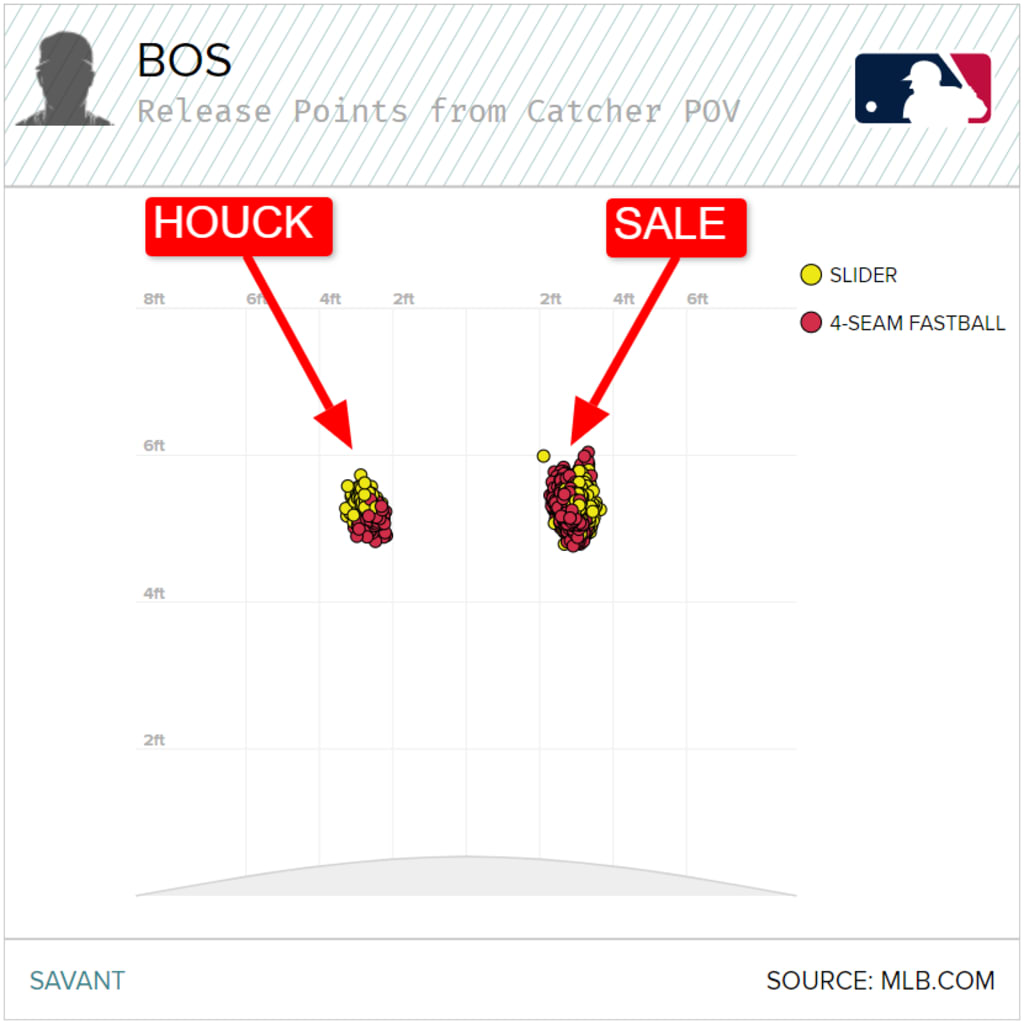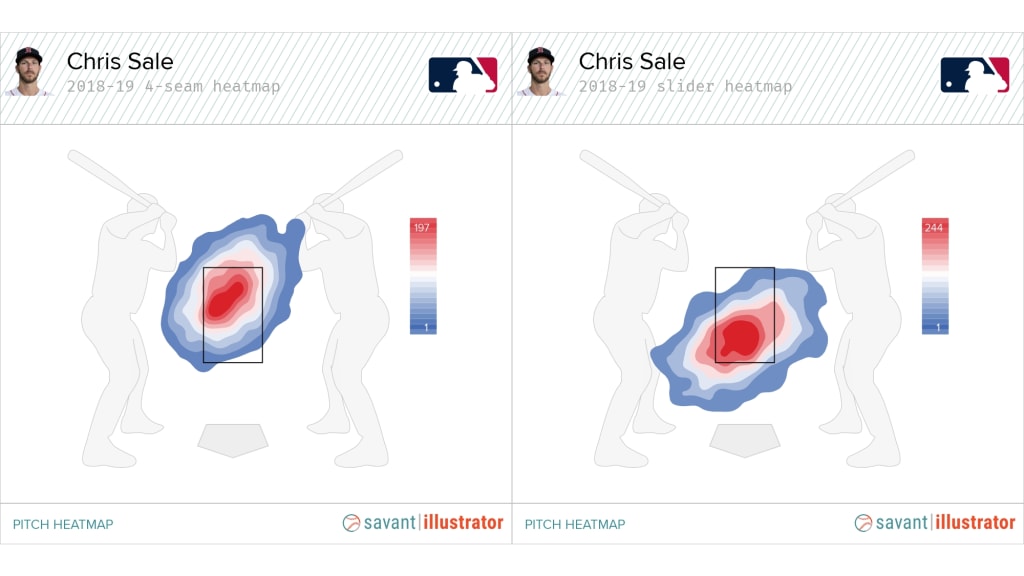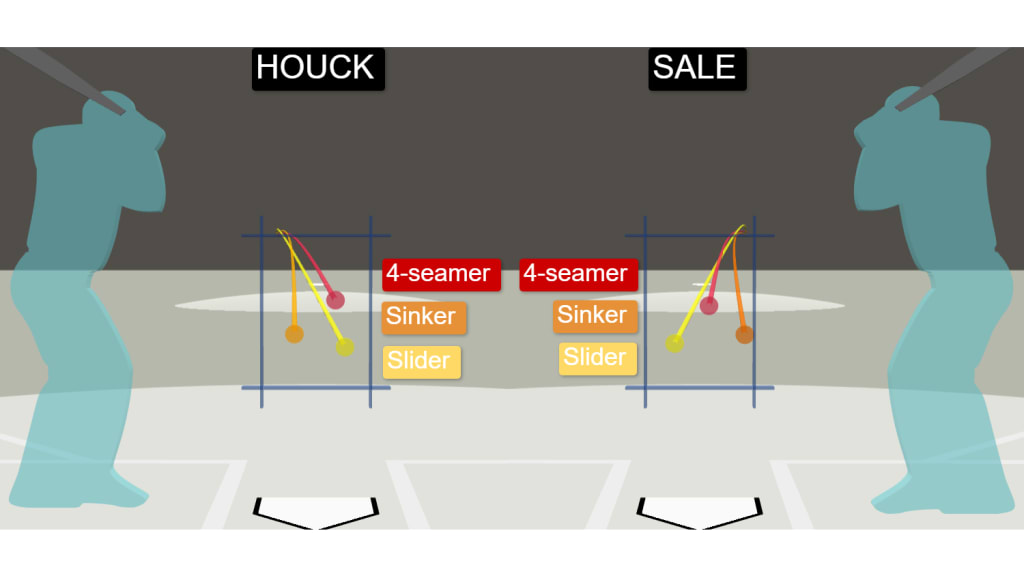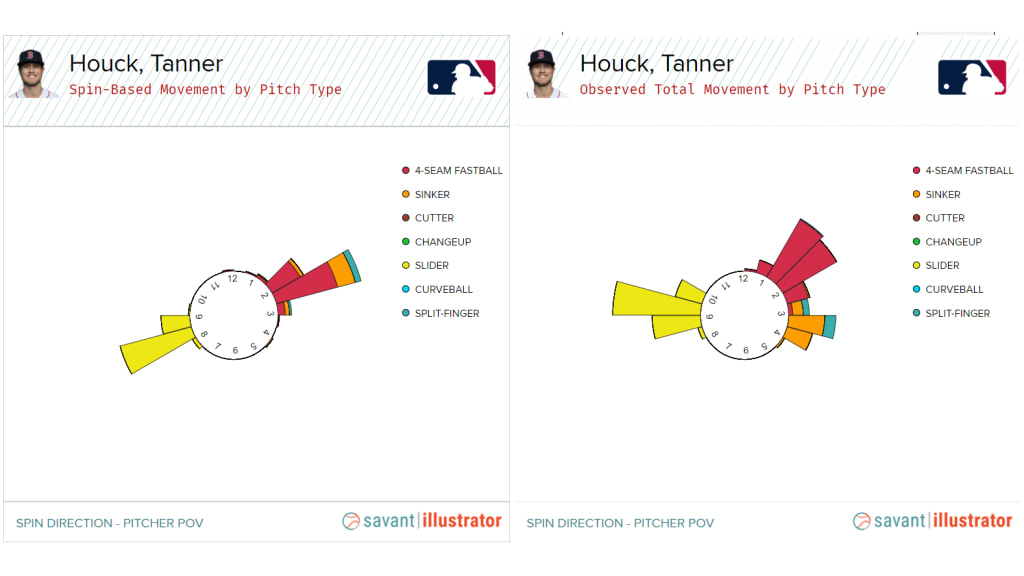There are two pitchers who can save the Red Sox down the stretch. One is Chris Sale. The other is … wait, is that also Chris Sale?
Well, not literally. It's Tanner Houck. But if you watch Houck pitch, you might notice something uncanny. The 25-year-old righty is almost like a Sale clone. And his stuff is for real.
Houck returns to the Boston rotation Saturday for the team's doubleheader against the Blue Jays. If he keeps pitching like he has been (2.45 ERA, 30 strikeouts in 22 innings), he's going to force the Red Sox to keep him there for the playoff push. And when Sale follows soon after, the two of them could be exactly the tandem Boston needs. Here's why.
Sale and Houck are mirror images on the mound. Check this out.
And this.
It goes beyond the visual similarity, too. Let's dive into the Statcast data. Sale's numbers are for 2018-19. Houck's are for 2021.
4-seam/slider usage
Sale: 37% 4-seamers | 37% sliders
Houck: 38% 4-seamers | 38% sliders
Houck relies on the same two-pitch combo as Sale: a hard four-seam fastball and a sweeping slider. Both pitchers throw either a four-seamer or slider three out of every four pitches … and both pitchers have the same even mix between the two pitches, which makes it all the harder to tell which one's coming.
Release point
Sale: 5.30 feet vertical | 3.21 feet horizontal
Houck: 5.29 feet vertical | 2.89 feet horizontal
Houck releases his fastballs and sliders from the same height as Sale, but it's the horizontal release point you care more about for these two sidearmers. Both pitchers let their pitches go from close to three feet away from the center of the rubber.

Sale gets out a little wider than Houck -- he's slightly more extreme to the first-base side of the rubber than Houck is toward the third-base side -- but the point is, both of them are big-time crossfire pitchers. Sale lets the ball go from way out toward first, Houck does the same but toward third.
Imagine how hard their stuff is to see for a same-sided hitter. When Sale faces a lefty, or Houck faces a righty, the ball is basically coming at them from behind their back. And often, the ball that starts behind that hitter's back is a slider that breaks across the entire plate and ends up on the other side.
Pitch location
Sale:

Houck:

Houck and Sale both like to work in the same general areas of the zone, relative to their handedness. Both pitchers go up and to the glove side with their fastballs (for Houck, that's up and away to a right-handed hitter; for Sale, that's up and in). And both go down and to the glove side with their sliders (for Houck, down and away to a righty; for Sale, down and in).
In other words, Houck is doing the same type of thing from the right side that Sale does from the left side when it comes to how he attacks hitters with his best offerings.

Fastball velocity
Sale: 94.4 mph
Houck: 94.5 mph
Sale and Houck's filthy sliders work even better because they have the firm fastballs to pair with them, pumping in those fastballs in the mid-90s.
For Houck, that velocity is a big leap from his rookie season, in 2020, to 2021. He's added multiple ticks to his velo across the board.
Houck's velocity, 2020 to '21
4-seamer: 92.8 mph to 94.5 mph (+1.7 mph)
Sinker: 90.9 mph to 93.8 mph (+2.9 mph)
Slider: 82.2 mph to 84.3 mph (+2.1 mph)
Splitter: 87.1 mph to 88.5 mph (+1.4 mph)
The extra velo makes a difference because it's giving hitters less time to react to a combination of pitches that look very much the same coming out of Houck's hand. Houck gets near-perfect spin mirroring between his fastballs, both four-seam and sinker, and his sliders. That means they spin in exact opposite directions, like mirror images of each other, which can make those pitches blend together to a hitter's eye even when they're about to break completely apart.

When Houck's fastballs and slider come out of his hand, they're spinning on the same axis, which disguises them. By the time they get to the plate, the four-seam fastballs are riding through the strike zone, the sinkers are dropping hard down (30.8 inches, +8.5 inches vs. an average sinker) and to the right (14 inches, basically the same as his slider but in the other direction), and the sliders are sweeping across the plate.
Slider break
Sale: 14.2 inches of horizontal break
Houck: 14.3 inches of horizontal break
Now we get to the money pitch: the wipeout slider. That's been Sale's signature for his entire dominant career. It could be Houck's, too.
Sale's slider sweeps across the plate from left to right. Houck's slider sweeps across the plate from right to left. They're moving in opposite directions -- but they sweep the same amount. And that amount is "a lot."
Houck's 14.3 inches of break don't just mean his slider moves like Sale's; it also means he has top-tier movement. Houck gets 7.3 inches of horizontal movement above average with his slider. His slider breaks more than twice as much as other MLB sliders thrown at similar velocity and with similar release points.
So why does it matter that Houck pitches like a mirror image of Sale? Well, the quick and easy answer is, because Chris Sale is one of the nastiest aces in baseball. Just getting back the original lefty version would be great; if you have a young, up-and-coming righty version of him, too, that's even better.
